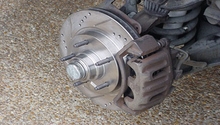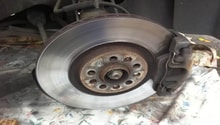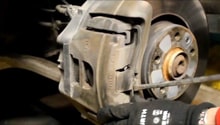Audi A6 C6: Brakes Diagnostics Guide
Are your brakes failing to stop your car as they should? This article will walk you through the potential causes of braking issues and put a halt to them for good.
This article applies to the Audi A6 C6 (2005-2011).
Brake problems are a serious issue for a number of reasons. The biggest is obviously safety, as faulty brakes can cause collisions with other cars or objects. We all know that brakes wear out over time and that regular maintenance is important, but what if your issues aren't simply worn pads or rotors? With modern braking systems, such as those employed in the Audi A6, there are a number of other components that can be causing your braking issues. If your brakes are acting up, or you suspect that they are acting up, read through the handy diagnostic guide to sort out your troubles before they become headaches.

Materials Needed
- Jack and jack stands
- Socket set and ratchet
- Vacuum gauge
Step 1 – Check your brake pads and rotors
Pads and rotors are the most common cause of braking issues in any car.
Brake pads generally last for tens of thousands of miles, depending on how much you apply the brakes and how hard you drive. It's a good idea to check them frequently, as badly worn pads can have a large impact on your car's ability to stop in a short distance. You can visually check the thickness of your pads without even removing the wheel, or take the wheel off and unbolt the caliper to get a closer look.
Signs of worn brake pads include decreased brake dust, a screeching metal on metal noise when applying the brakes, a grinding feeling when pressing the brake pedal, and increased braking distances.
Rotors need to be resurfaced or replaced much less frequently than pads, but that doesn't mean they don't wear out as well. If you run your pads down to bare metal, they can damage the surface of the rotor and cut grooves in it. If your steering wheel shakes when you apply the brakes, your rotors are probably warped.
In some extreme cases, caliper pistons can seize and lock your pads onto the rotor, which generates a ton of heat, a burning smell and squealing while driving. If you don't catch the problem quickly enough, this can ruin the pad and rotor in addition to the caliper. To inspect the caliper, you will have to remove it and inspect the caliper's piston for leaks or rust buildup, causing it to seize.
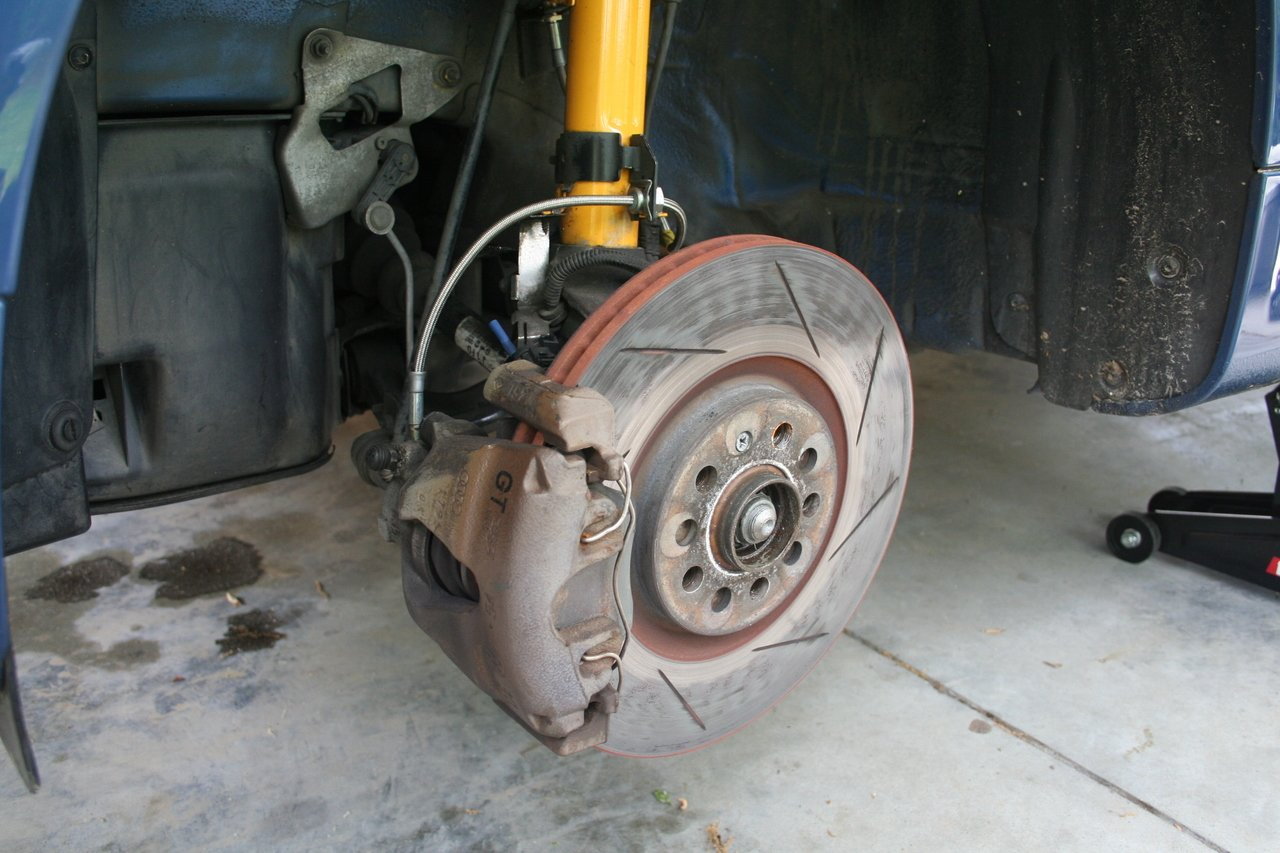
If your rotors and pads are in good shape, move on to Step 2.
Step 2 – Check your brake fluid
Contaminated or low fluid can cause a number of braking issues.
If your brake fluid level is low or the fluid is old and dirty, it can lead to a number of different issues. These include a brake pedal that goes down too far or even to the floor and weak or spongy brakes. To inspect your brake fluid, pop the hood and check your fluid level in the reservoir. Open the reservoir and look at the color of the fluid. Brake fluid when new is amber in color, but over time, can accrue contamination, darkening it substantially. If your brake fluid is dark in color, or has visible contamination, we recommend flushing the brake fluid immediately. Brake fluid should be replaced bi-annually as regular maintenance.
(Related Article: How to Replace Brake Fluid - AudiWorld)
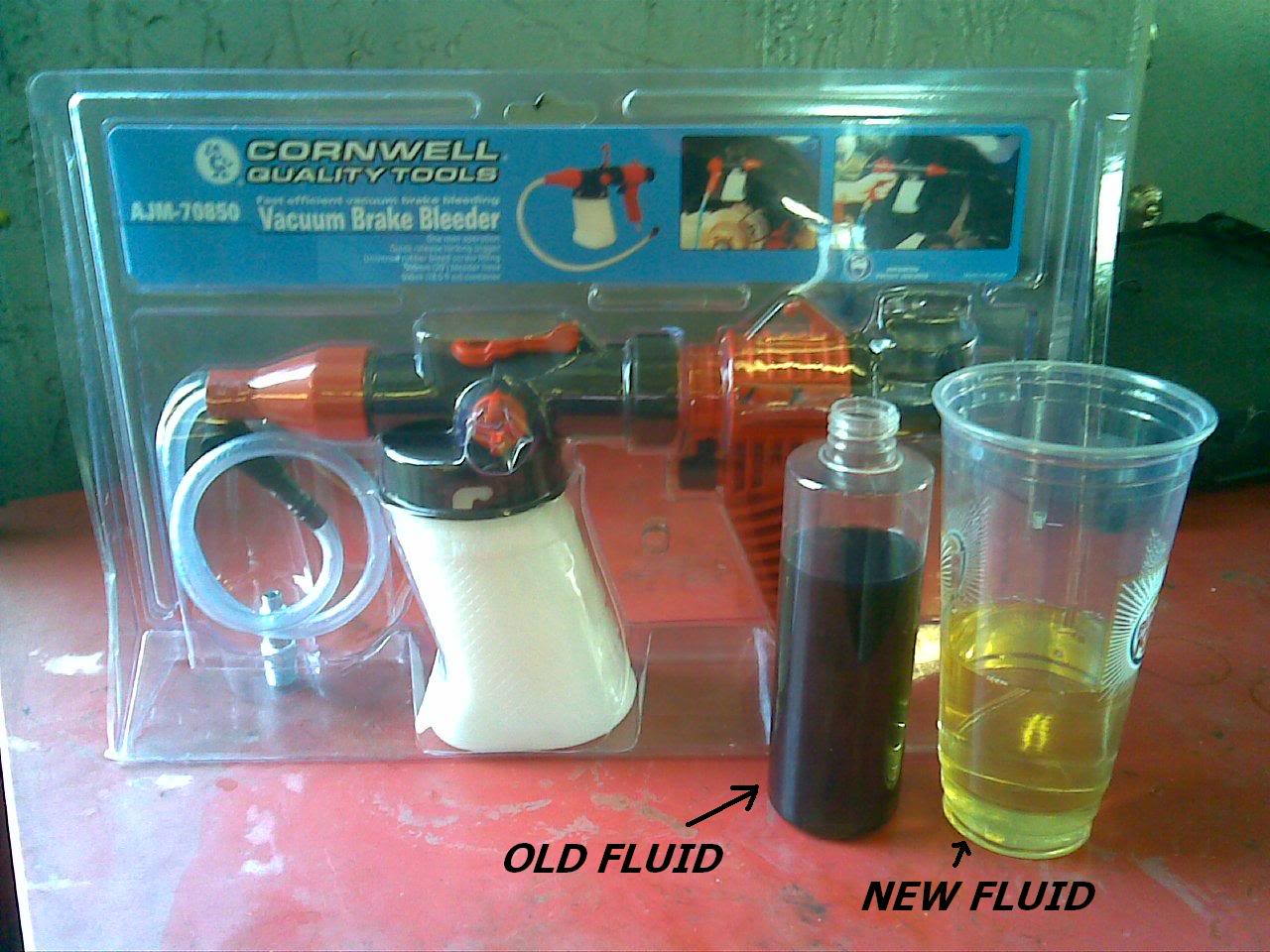
If your brake fluid is in good shape and full, move on to Step 3.
Step 3 – Check your vacuum lines and master cylinder
Air and fluid leaks can lead to major issues.
A bad master cylinder can cause your brake pedal to go all the way to the floor with little or no pressure. Similarly, a leak in the vacuum system can cause a hard pedal. Inspect the master cylinder for leaks. Check all of the vacuum lines coming off the brake booster and leading into the intake, as well as the vacuum booster, inspecting them for damage and ensuring that they are all secure and closed. If you can't find anything, use a vacuum gauge and check each line. Oftentimes, O-rings wear out and can be hard to spot.
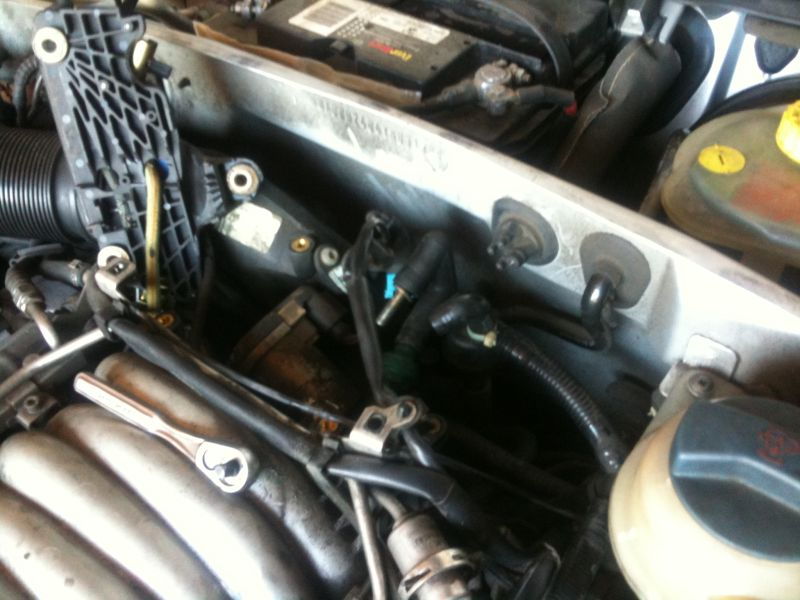
Related Discussions
- Hard Brake Pedal Vacuum Line Problem - AudiWorld
- Front Brakes Squeaking - AudiWorld
- Rear Brake Caliper Seized - AudiWorld


